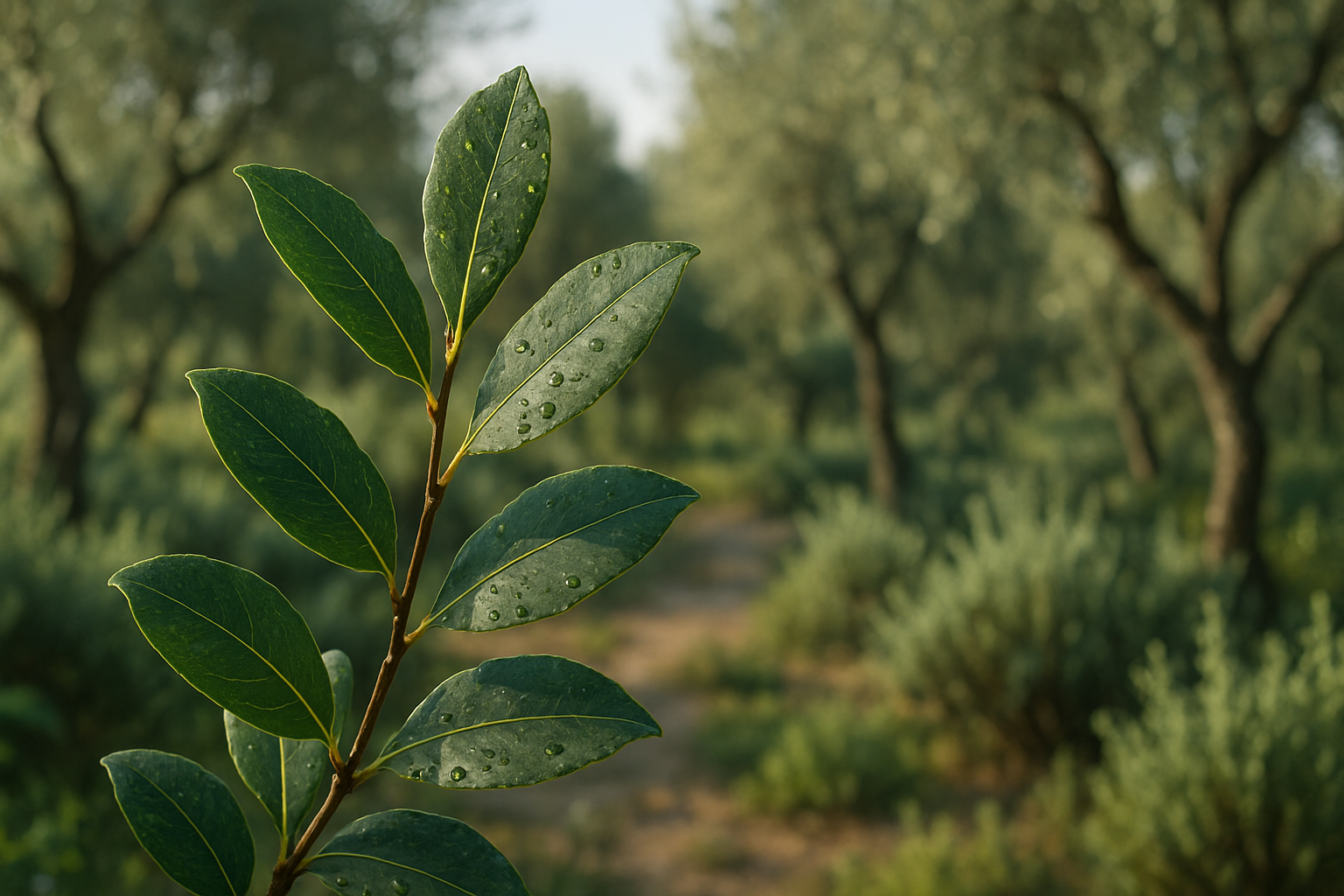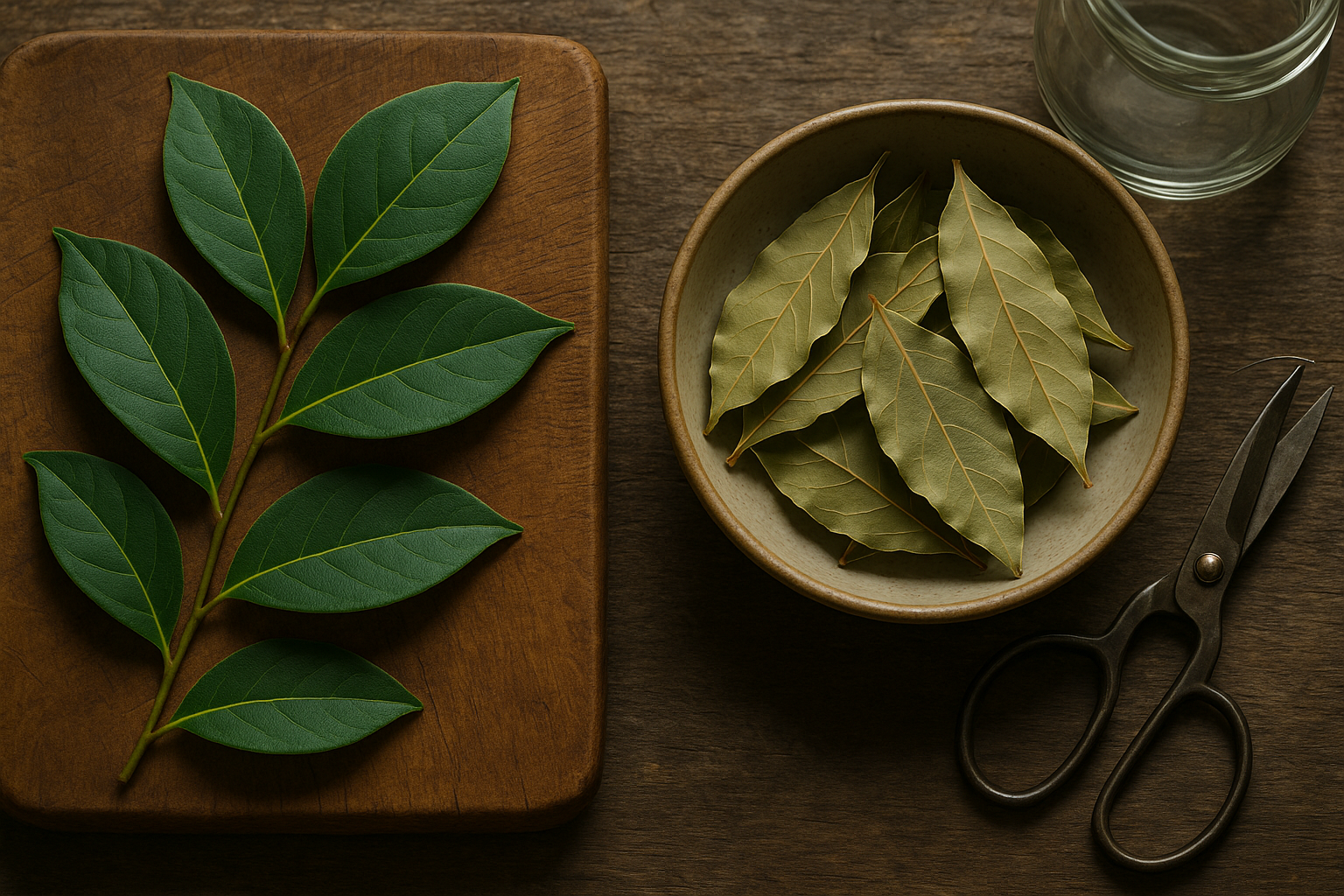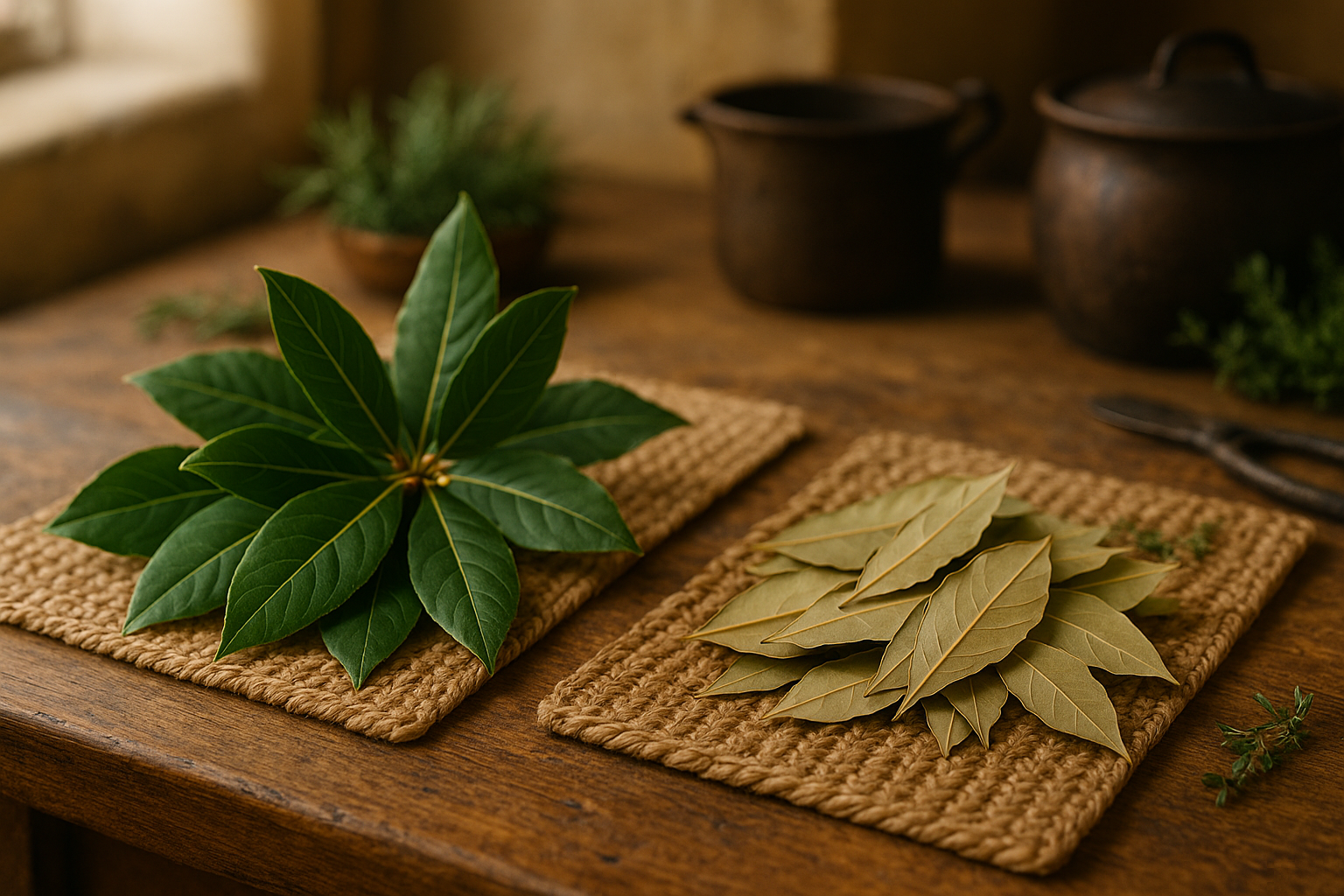Introduction
Cooking with bay leaves has long been a subtle secret among chefs and home cooks alike, transforming everyday dishes into fragrant, memorable meals. These glossy, aromatic leaves originate from the Mediterranean region and have found their way into kitchens worldwide, flavoring everything from classic French stews to Indian curries.
If you’ve ever added a bay leaf to a simmering pot, you know it’s not about bold, overpowering taste—it’s about infusing soups, sauces, and roasts with a gentle layer of herbal depth. But there’s an ongoing debate in kitchens everywhere: should you be cooking with fresh or dried bay leaves?
Some swear by the more vibrant, slightly minty character of fresh bay leaves, while others rely on the convenient, more concentrated earthiness of dried ones. Understanding these differences isn’t just trivia; it’s the key to unlocking bay leaf’s full culinary potential in your own kitchen.
Choosing the right form for the right dish means every meal can benefit from the bay leaf’s nuanced flavor, whether you’re braising meats, preparing hearty beans, or making a simple tomato sauce. Knowing when to use fresh versus dried makes all the difference, elevating your home cooking from ordinary to extraordinary.
“`html
What Exactly Are Bay Leaves?

Bay leaves are the fragrant leaves of the bay laurel tree (Laurus nobilis), a Mediterranean evergreen known for its glossy, oval-shaped leaves. These “true” bay leaves are a staple in kitchens around the world, thanks to their subtle yet distinctive flavor—a mellow mix of herbal, floral, and slightly bitter notes.
You’ll find bay leaves infusing broths, soups, curries, and stews, from classic French bouillabaisse and Italian ragù to Indian biryanis and American pot roasts. Since bay leaves don’t soften much during cooking, they’re typically simmered whole and removed before serving.
There are also other leaves often mistaken for true bay leaves, such as:
- California bay leaf (Umbellularia californica), which has a much stronger, eucalyptus-like flavor
- Indian bay leaf (Cinnamomum tamala), which tastes more like cinnamon
It’s important to read labels when shopping, as these similar-looking leaves can alter the character of your dish.
A useful tip for home cooks: always store bay leaves in an airtight container away from light to preserve their aroma, and remember that just one or two leaves can add depth without overpowering your food.
“`
Fresh Bay Leaves vs. Dried

Fresh bay leaves and dried bay leaves may come from the same plant, but they offer very different cooking experiences. Fresh bay leaves are deep green with a glossy surface, a firm texture, and a more subtle aroma. They smell grassy and slightly floral, lending a gentle, green note to dishes.
Dried bay leaves, on the other hand, are pale, brittle, and have a more concentrated, sharp scent—almost medicinal—because the drying process intensifies certain compounds. Flavor-wise, dried bay leaves release their essence more slowly but deliver a stronger, earthier backbone to soups and stews.
Fresh bay leaves impart a lighter, more nuanced layer of flavor, making them ideal for quick-cooking dishes, curries, or infusions, whereas dried leaves work best in slow-simmered recipes like braises, sauces, and hearty stews.
Fresh bay leaves are typically harvested by picking leaves straight from the bay laurel tree, often rinsed and used immediately. Dried leaves are picked when mature and then gently air-dried out of sunlight to preserve their essential oils.
When it comes to storage:
- Fresh bay leaves last up to a week in the fridge (wrapped in a damp paper towel), but you can freeze them for longer.
- Dried bay leaves can retain good flavor for about a year if kept in a cool, dark spot.
As a rule of thumb, use dried bay leaves if the recipe’s cooking time exceeds 30 minutes; swap for fresh when the leafy, aromatic top note matters most. And always remember: one fresh leaf can often do the job of two dried ones.
How Bay Leaves Affect Flavor in Cooking
Bay leaves may look humble, but they add a subtle backbone to many savory dishes. When simmered, they release gentle herbal and floral notes, along with a touch of bitterness that helps balance rich stews, soups, and sauces.
Fresh bay leaves offer a milder, softer aroma with green, slightly eucalyptus-like tones—they’re best used when you want nuance, like in delicate stocks, seafood braises, or vegetable-based broths.
On the other hand, dried bay leaves are more potent, with sharper, spicy edges and a stronger presence. For hearty recipes such as beef stew, chicken soup, chili, or tomato sauce, dried bay leaves stand up nicely to bold flavors, permeating the dish as it cooks.
When adding bay leaves, toss in one or two whole, then remove them after cooking; their tough texture and slightly camphoraceous taste means they’re not pleasant to eat directly.
Try adding a fresh bay leaf to poached fish or court bouillon, and reach for dried ones in slow-cooked beans, bolognese, or homemade pickles. Taking just a moment to pick the right type—fresh for subtlety, dried for impact—helps elevate both everyday meals and special recipes.
Safe Use and Storage of Bay Leaves
Bay leaves are a classic addition to many soups, stews, and sauces, but they aren’t meant to be eaten whole. Their tough, leathery texture makes them a choking hazard and unpleasant to chew, so always remember to fish them out and discard them before serving your dish.
For storage, keep dried bay leaves in an airtight container in a cool, dark cupboard to preserve their essential oils and flavor—replace them every year for best results. Fresh bay leaves can be stored in the refrigerator, wrapped loosely in a damp paper towel inside a plastic bag for up to a week, or frozen for longer storage.
To keep your dishes tasting just right, use bay leaves sparingly; just one or two leaves are enough for most recipes. Too many leaves, or simmering them for too long, can lead to a bitter, overpowering flavor. Taste your dish as it cooks and adjust as needed to strike the perfect balance.
Substitutes and Pairings
If you find yourself out of bay leaves, there are several handy substitutes that can bring similar depth to your dishes. Thyme is a go-to option—it has earthy and slightly minty notes that mimic bay’s subtle background flavor. Oregano, while a bit stronger, works well in soups and stews by adding a peppery warmth. Basil offers a milder, sweeter taste that can stand in for bay leaves in tomato sauces or slow-cooked recipes.
For a more savory boost, try rosemary in moderation; its piney aroma complements meats and vegetables. Besides substitutes, remember that bay leaves shine alongside black peppercorns, garlic, and parsley, which all enhance the savory depth in soups, stocks, and braises. A pinch of dried sage or a dash of celery seed can also echo bay’s herbal qualities—just use sparingly as these flavors are potent. Experiment with blends to find what best matches your taste and dish.
Quick Tips for Cooking with Bay Leaves
Bay leaves are wonderfully subtle yet powerful. To get the best flavor, add them early in the cooking process—just as your soup, stew, or sauce starts to simmer. This allows the aromatic oils to infuse your dish over time.
Typically, one or two bay leaves are plenty for a standard pot, as too many can make the dish bitter. Always remember to remove the leaves before serving since they remain tough and can be a choking hazard.
For extra flavor, gently snap or crush dried bay leaves before adding them, but don’t break them into tiny bits, or they’ll be hard to fish out later.
If you have fresh bay leaves, they offer a brighter and slightly floral note—use the same amount, but keep in mind they’re a bit more potent than dried.
Try adding a bay leaf to rice, beans, or slow-cooked meats for an easy boost of depth and fragrance.
